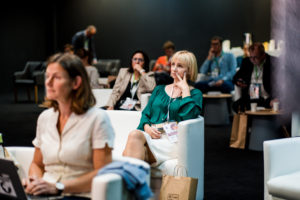Organic Food Conference 2021
Our bi-annual Organic Food Conference 2021 (formerly Organic Processing Conference), takes place from 30 September-1 October online & live from Warsaw, Poland. This edition under the motto ‘The future of organic food’ is organised by IFOAM Organics Europe in collaboration with the Polish Chamber of Organic Food.
The 2021 edition of the Organic Food Conference is the go-to place particularly for organic food processors, retailers, traders, importers and control bodies, and covers, among others:
- The European Green Deal and how to reach the 25% target of organic land by 2030;
- Expected changes in the new EU Organic Regulation;
- What packaging should look like for organic products; and
- An update on the ProOrg project;
- Inspiring stories of organic successful business models, examples from FoodShift2030.
As in previous editions, sector representatives, policymakers and participants have the opportunity to network, share knowledge and gain insights into supply-chain development, market trends and much more.
Have a look at our programme! This is a paid event with reduced rates for IFOAM Organics Europe’s and PIZE’s members, students and farmers.
Programme
– Ryszard Kamiński, Undersecretary of State of Ministry of Agriculture and Rural Development
– Eduardo Cuoco, Director, IFOAM Organics Europe
Speakers:
– Dr. Helga Willer, Research Institute of Organic Agriculture FiBL
– Krystyna Radkowska, President, Polish Chamber of Organic Food
Moderation:
– Marian Blom, Board Vice President, IFOAM Organics Europe
Speakers:
– Barbara Altmann, Head of Strategic Sourcing Food Ingredients, Rapunzel
– Chiara Faenza, Resp. for Sustainability and Values Innovation, Quality Department – Coop Italia
– Massimo Fileni, Vice President, Fileni Alimentare SpA
– Sylwester Struzyna, CEO, Bio Planet S.A. / Vice-CEO, Polish Chamber of Organic Food
Moderation: Eric Gall, Deputy Director-Policy Manager, IFOAM Organics Europe
Speakers:
– Hans F. Kaufman, Head of Communication, Bundesverband Naturkost Naturwaren (BNN) e.V.
– Anne-Claire Asselin Founder, Expert Environment and Biodiversity at Sayari
Moderation: Silvia Schmidt, Policy Associate Manager, IFOAM Organics Europe
Speakers:
– Michel Reynaud, Board Member and sector representative for certification, IFOAM Organics Europe / Ecocert
– Alex Beck, Interest Group of Organic Processors and Traders, IFOAM Organics Europe / AöL
– Laurence Bonafos, DG AGRI, European Commission
Moderation: Emanuele Busacca, Regulation Manager, IFOAM Organics Europe
Speakers:
– Johanna Stumpner, Interest Group of Organic Processors and Traders, IFOAM Organics Europe / AöL
– Sarah Compson, Chair of Interest Group of Organic Processors and Traders IFOAM Organics Europe / Soil Association
– Steven Ijzerman, EkoPlaza
– Valentina Pizzi, Marketing & CFO, Pizzi Osvaldo & C. Spa
Moderation: Dora Drexler, Board Vice-President, IFOAM Organics Europe / Ömki
Speaker:
– Roberto Pinton, Board Member, IFOAM Organics Europe
Example from FoodShift2030 project:
– Karin Beukel, Co-Founder, Circular Food Technology
Speakers:
– Janusz Wojciechowski, Commissioner for Agriculture and Rural Development, European Commission
– Jan Plagge, President, IFOAM Organics Europe
Moderator: Eduardo Cuoco, Director, IFOAM Organics Europe
Supported by:






















